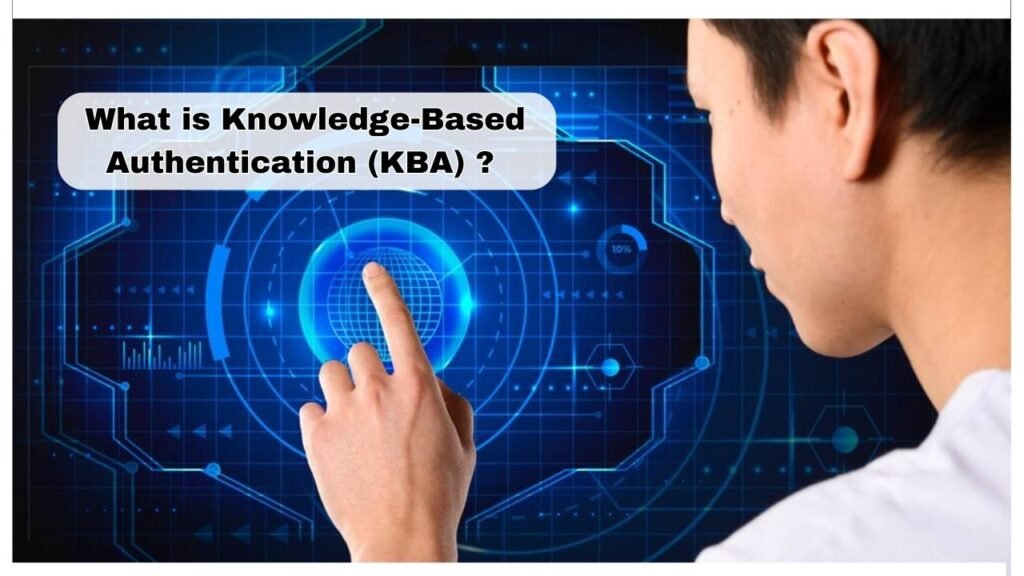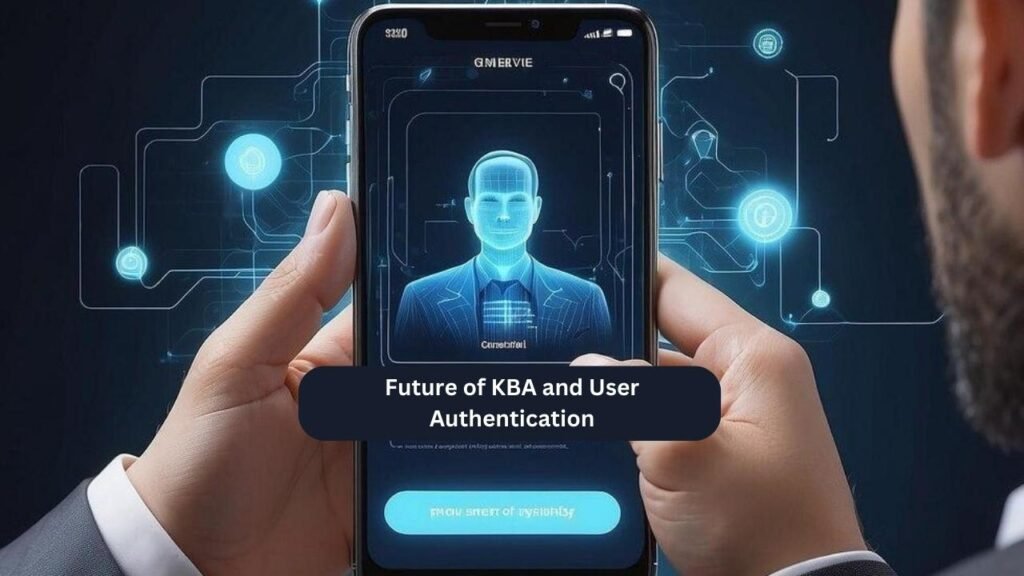
Knowledge-Based Authentication (KBA) is a method used to verify a user’s identity by asking questions only they should know the answers to. Its purpose is to protect sensitive data and systems from unauthorized access. KBA is important because it helps ensure that only the right person can access personal information and perform online services safely.
Importance in Modern Authentication Systems
Strong authentication is a necessity that has become severe with the escalated cyber-attacks. In today’s authentication systems, particularly in the private sectors such as banking, healthcare, and e-commerce, KBA is utilized because it possesses significant elements that will protect customer information. Data protection would assist the company to satisfy part of the legal obligations and achieve client trust. Knowledge-Based Authentication may enhance security using other forms of authentication.
Types of Knowledge-Based Authentication
For further knowledge on blockchain technology, software developers interested in this area can take development and programming courses. Among the best courses in Udemy is “Ethereum and Solidity: The Complete Developer’s Guide.” In this course, participants are enabled to learn how to develop smart contracts and dApps. Another good course is the Certified Blockchain Developer course provided by the Blockchain Council, which offers a complete understanding of blockchain development with practical experience.
1. Static KBA
Static KBA comes pre-programmed with predefined questions, to which the responding person answers based on his personal data. Questions are typically chosen during sign-up for accounts and do not change at any later point in time. Examples of static KBA questions would be: “What is your mother’s maiden name?” or “What was the name of your first pet?” The method is simplistic but often clashes with effectiveness since social media and data hacks make more information about personal life widely accessible.
2. Dynamic KBA
Dynamic KBA changes with the history and patterns of transaction and behavior of the user and asks questions. It is safer as every time the user is accessed, different questions are asked. For instance, a banking app might ask “How much was your last deposit?” Dynamic KBA reduces hazards of static questions making illegal access difficult.
3. Enhanced KBA
Superior KBA employs static and dynamic features to offer full authentication. It can be ranging from personal knowledge to behavioral analytics and device recognition. In this multi-layered verification, identity is better secured during such transactions that involve high risks or access to sensitive data
How KBA Works and When It Is Used
KBA is usually applied in cases that require further security measures. It works on a simple process:
- User Identification: The user is challenged with a need to provide his or her identification detail such as a username.
- Knowledge Verification: The system challenges the user with some series of questions that he or she answers correctly.
- Access Granted/Denied: Access is granted if the user succeeds in answering the questions. On the other hand, access is denied if the user fails to answer appropriately.
Use Cases in Various Industries
- Banking: The financial institute employs KBA for authenticating their customers in the process of online banking sessions or resetting their passwords. In this way, the right account holder alone will be able to access his sensitive information.
- Healthcare: KBA holds a very important position in healthcare institutions as the patient's private information has more implications due to the healthcare act HIPAA. Sometimes, the service provider applies KBA to verify the patient's identity before revealing his health information.
- E-commerce: In the checkout process of online or recovery of an account, online retailers use KBA to guard customer's information and transactions from frauds.
KBA vs Other Authentication Methods
There are other methods of authentications as compared to KBA; these include biometrics, multi-factor authentication (MFA), and tokens.
- Biometrics: Biometrics is the use of physical characteristics that may include fingerprint recognition and facial recognition for authentication. It is one of the highly secure authentication methods since it is highly targeted, but it remains controversial on the issue of privacy.
- MFA: It incorporates two or more forms of verification, such as KBA that is attempted with an OTP sent to a mobile device. In general, MFA is regarded as stronger than just KBA.
- Tokens: Hardware and software tokens offer an added level of security. Tokens are independent of user's knowledge. Tokens are relatively better protected against phishing as compared to KBA.
Identity Proofing in KBA

How Identity Verification Works
KBA will require users to provide answers that help authenticate the identity of users. The process may involve out-of-wallet questions, which are not directly related to the information the user has shared with the organization.
Knowledge-Based Verification (KBV) and Out-of-Wallet Questions
Out-of-wallet inquiries force users to answer questions not typically stored in the user’s account, thus challenging fraudsters to determine those answers. The user may be asked the former address or loan payment amount. This complexity adds a layer of security but can degrade the user experience.
Effectiveness of KBA
How Effective is KBA in Practice?
KBA is reliant upon quality questions and user retention of knowledge. KBA provides some protection initially but it is not impenetrable. In most cases, a number of users will forget their answers or choose easily guessable facts, leaving holes.
Common Vulnerabilities
KBA has several vulnerabilities such as:
- Phishing: Hackers might use social engineering to obtain answers from users for their KBA questions.
- Social Engineering: Scammers might use the personal details of an individual available on the web and use them to answer his KBA questions successfully.
- Data Breaches: If an attacker manages to obtain user data, then he would be able to extract the answers to the static KBA questions quite easily
Advantages and Disadvantages of KBA
Benefits: Simplicity, Ease of Use
The simplicity and ease of use make KBA a useful tool. People are familiar with answering personal questions, hence easy. It would fit well into existing authentication infrastructures without significant investment
Drawbacks: Security Risks, Challenges with Maintaining PII
However, KBA also has notable downsides. Using personal information poses significant security risks-perceptible to the PII. In this case, if the information is breached, the whole authentication process may be compromised.
Security Risks and Challenges of KBA

Security Question Vulnerabilities
A security question can become the weak link in the entire Knowledge-Based Authentication process. Most people opt for easily guessable or available answers on social media, making the whole system susceptible to attack.
Issues with Personally Identifiable Information (PII)
The protection of PII is a major challenge to organizations relying on KBA. Information compromise tends to reveal sensitive information and will likely be used to answer the KBA questions.
Social Engineering and Phishing Attacks
From the earlier discussion, applications of social engineering represent an attack on the KBA vulnerability. Attackers are likely to manipulate the user by asking them to divulge their answers; therefore, KBA is ineffective.
Compliance and Regulatory Considerations
KBA and Compliance with Regulations
KBA should be aligned with other regulatory acts such as GDPR and PCI DSS. Organizations must ensure that data is kept safe from all the users and thus the methods followed in KBA have to be aligned with these acts and non-compliance will cause legal issues.
Know Your Customer (KYC) and Other Regulatory Frameworks
Under the KYC, the organizations will be required to prove their customers’ identities. KBA can attribute to these requirements, but in totality must accompany other security requirements to ensure full compliance.
New Technologies to Replace or Complement KBA
Multi-Factor Authentication (MFA)
Multi-factor authentication requires that multiple methods of authentication are employed, significantly increasing security more than relying only on KBA. This is because when using two or more verification factors, the individual does not rely solely on knowledge-based methods for authentication.
ZKP-Based Authentication (Zero-Knowledge Proof) offers an innovative approach by verifying identity without revealing sensitive information, adding another layer of security. Biometric authentication techniques, such as fingerprinting or facial scanning, provide a much safer alternative to KBA. They don’t demand that the user remember answers to questions.
Biometrics
Biometric authentication techniques, such as fingerprinting or facial scanning, provide a much safer alternative to KBA. They don’t demand that the user remember answers to questions.
Behavioral Authentication
Behavioral authentication is the process of authenticating the identity of the user on the basis of analyzing user behavior like typing patterns and mouse movements. It provides continuous authentication and provides additional layers of security without using knowledge.
Risk-Based Authentication
Risk-based authentication adjusts the degree of verification according to the risk perceived by the transaction. In that respect, Knowledge-Based Authentication can be combined with other methods for a much better user experience-security balance.
Zero Trust Security Models
Zero trust security models suppose threats may come from inside and outside the network. This means uninterrupted verification through multiple authentication methods to confirm a user’s identity.
The Future of KBA and User Authentication

How KBA is Evolving
Organizations are strengthening KBA to improve security and user experience. KBA can be applied with MFA and behavioral authentication to strengthen the system .
Potential Alternatives or Advancements
Technologies will evolve with time, and there may be alternatives for KBA in the near future. Biometric technologies, AI-driven behavioral analysis, and risk-based authentication will surely change user authentication. In this digital era, organizations must adapt with these changes to ensure security.
Knowledge-Based Authentication is an effective identity verification technology that is useful but has weakness. As the types of cyber risks evolve, firms must combine complementary strategies and new technology to protect their users’ data, as well as regulations, that require protecting personally identifiable information. Businesses will, thus improve both authentication security and usability.







